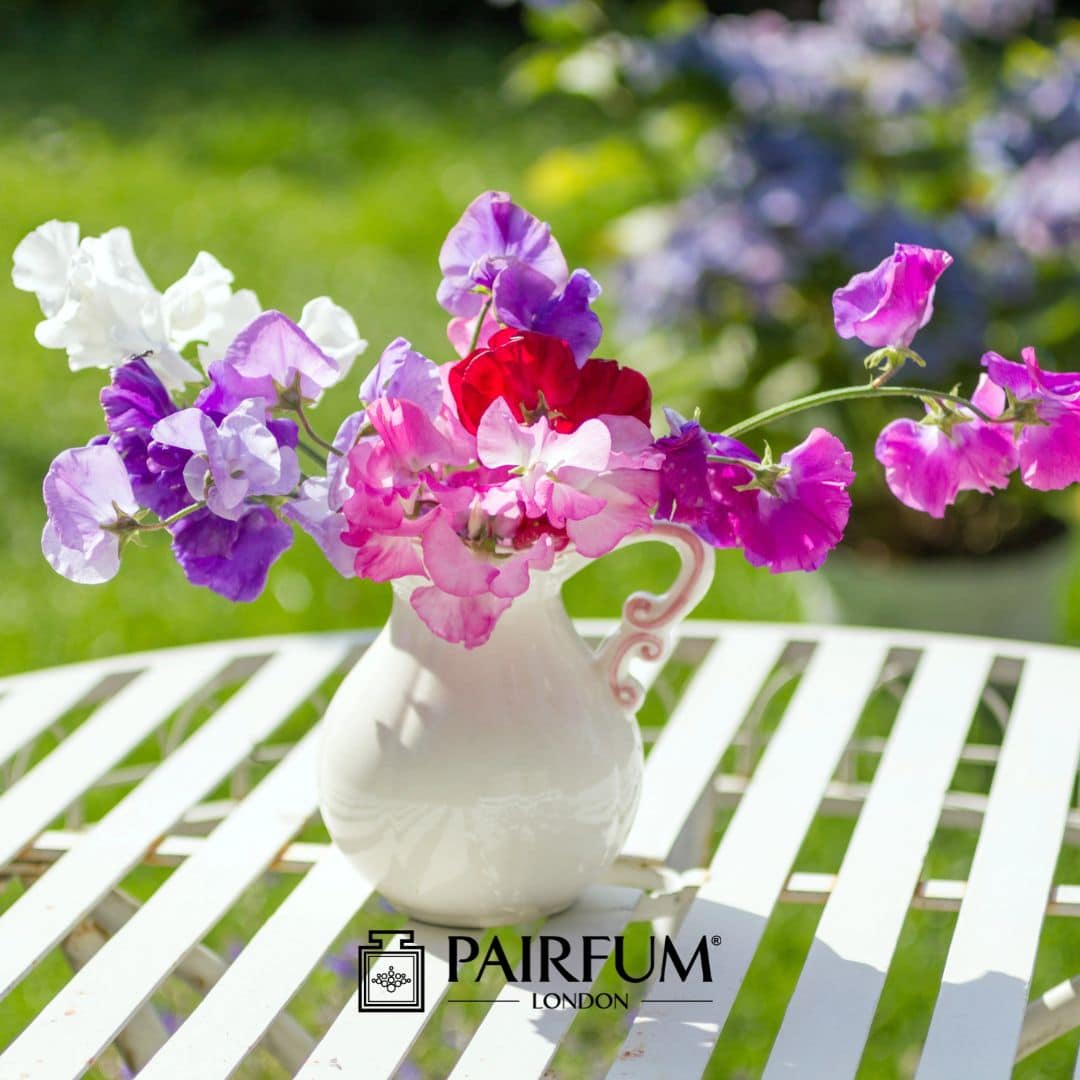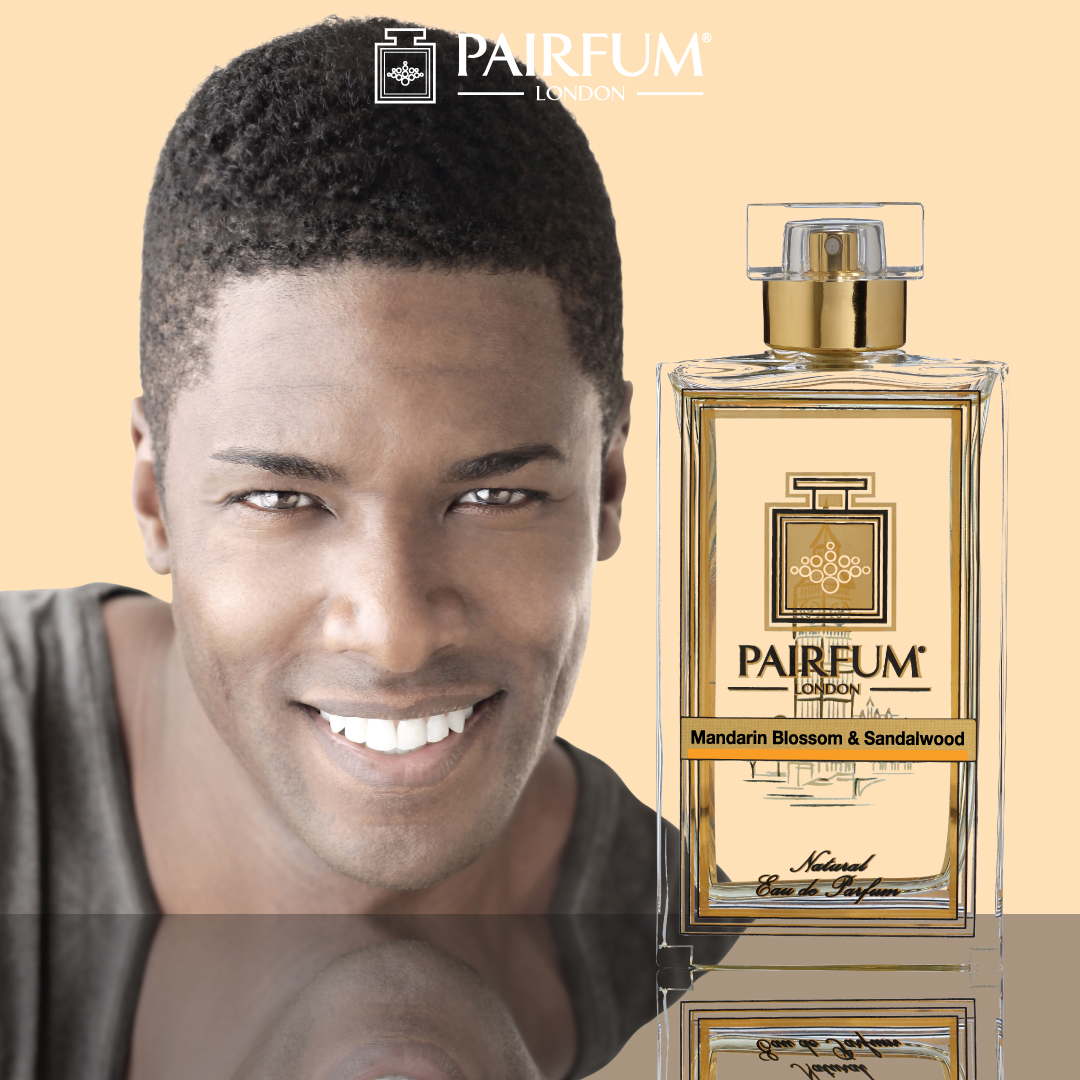Sweet Pea: Delicate and Floral Perfume Notes

Sweet pea, one of the most beloved flowers in gardens and perfumery, has long symbolised romance, gratitude and gentle pleasure. Its fragrance is soft and floral with a sweet, airy brightness that reminds one of spring mornings, wild hedgerows and sunlight on pastel petals. For centuries, gardeners have adored its climbing tendrils and abundant blooms, while perfumers have sought to capture its elusive yet uplifting aroma.
This flower, beautiful to behold and bewitching in scent, remains a timeless muse in perfumery and an icon of cottage gardens. Let us explore its fragrance profile, history in perfume making, cultivation, symbolism and continuing influence in both perfume and lifestyle today.
The Fragrance Profile of Sweet Pea
The scent of sweet pea is gentle but distinctive. It balances soft floral tones with a honeyed sweetness and a vague green freshness, giving a light and translucent quality that never overwhelms.
- Top notes: fresh, green and slightly fruity.
- Heart notes: floral, velvety, candy-like.
- Base (dry down): faintly powdery with a soft musk undertone.
Its versatility is one of its great appeals. Perfumers prize it as a middle floral note that bridges bright citrus openings with warmer bases of musk, vanilla, or sandalwood. This makes it especially suited for daytime scents, spring and summer perfumes, and compositions that are described as romantic or innocent. Fragrant sweet peas are also adored by florists when arranged as cut flowers, filling vases with fragrance while lasting several days thanks to their strong stem growth.
Botanical Origins and Classification
Sweet pea (lathyrus odoratus) belongs to the legume family Fabaceae. Native to the Mediterranean, particularly Sicily and southern Italy, it was first described scientifically in the late 1600s. From there it spread throughout Europe as an ornamental, quickly becoming a favourite in English gardens by the 18th century.
Despite being a member of the pea family, its seeds are toxic and must not be eaten, a fact sometimes overlooked due to its name. The flower is prized instead for its beauty and fragrance, flourishing in climbing vines that are often trained over a trellis, arches and fences. Unlike its perennial cousin lathyrus latifolius, the sweet pea flower offers fragrance that is both delicate and recognisable.

A Historical Flower with Victorian Romance
Sweet pea rose to prominence during the Victorian era, when the fascination with flowers and their symbolic language flourished. Breeders like Henry Eckford in the late 19th century developed many of the grandiflorous varieties still grown today, particularly the Spencer variety, which became known for its ruffled petals, strong stem flowers and range of colours.
In Victorian floriography, sweet pea symbolised blissful pleasure, gratitude and parting thanks. A sweet pea bouquet was often gifted at the close of a pleasant visit, and their fragrance came to represent refined femininity and nostalgia. This romantic heritage remains deeply entwined with sweet pea perfumes. The Royal Horticultural Society further popularised sweet peas UK wide, and exhibitions of blooms became yearly highlights.
How Sweet Pea is Cultivated
Beyond perfume, sweet pea has a long-standing cultural and horticultural presence. Gardeners esteem them not only for fragrance but also for their dazzling display of colours from white and pink through to purple, scarlet and bicoloured variegations.
Growing sweet peas demands a little dedication but rewards richly:
- Sowing: A sweet pea seed is traditionally planted in autumn or early spring. Many gardeners soak seeds before sowing to soften their tough coats. Each seed eventually produces a vigorous sweet pea plant with climbing tendrils.
- Soil and Position: They flourish in rich, well-drained soil positioned in full sun with good air circulation.
- Support: Being climbing vines, they require stakes, supports or netting to grow strongly. A trellis is the most traditional way to grow them.
- Flowering: Regular picking prolongs flowering by encouraging the plant to produce more blooms.
This direct connection between cultivation and perfumery is part of its magic: the same blossoms admired on garden arches are those whose essence perfumers attempt to capture in a bottle. Growing sweet peas in pots has also become increasingly popular across the UK for patios and balconies, and gardeners often report excellent results when pots are well-fed and watered.
Sweet Pea as a Cut Flower
Sweet peas are celebrated as cut flowers. They are prized for their delicate petals, their ability to last in the vase and their romantic symbolism. A sweet pea bouquet delivery has become a popular choice for those wishing to express gratitude or joy. Many florists offer flower delivery sweet peas or allow customers to order sweet pea flowers for birthdays, anniversaries and seasonal events.
Increasingly, sweet peas are also available within flower subscriptions, where households receive fresh sweet peas mixed with other seasonal blooms. A sweet pea flower delivery service brings the romance of the summer garden indoors, allowing families to enjoy their perfume and colour at any time. Florists particularly treasure fresh sweet peas pink for wedding design, combining them with roses or freesia, while others arrange sweet peas flower displays as loose, natural cut flowers ideal for summer tables.

Types of Sweet Pea in Perfumery
Not all sweet peas are created equal, and perfumers carefully select different cultivars for their particular fragrance nuance.
- Spencer Variety Sweet Pea: Known for its showy ruffled petals and stronger aroma, this sweet pea variety lends itself beautifully to perfumery. It provides depth and a lingering floral base.
- Old-Fashioned Sweet Peas: Smaller blooms but wonderful delicacy. This heritage type is often favoured when seeking nostalgic or vintage-inspired perfumes.
- Novelty Varieties such as scarlet blooms: Lend subtle spice and freshness to bouquets.
Each type gives the perfumer a different hue to work with, from whispering softness to expressive and dramatic tones.
The Challenges of Extracting Sweet Pea Scent
Capturing the fragrance of sweet peas is notoriously difficult because the petals are fragile and lose potency quickly once picked. Historically, enfleurage was used, a traditional method where petals were pressed into fat which absorbed their scent, later washed with alcohol to extract the essence. This labour-intensive method produced a true though faint perfume.
Modern perfumery often relies on solvent extraction, which draws aromatic compounds into a concentrated resin known as an absolute. Yet true sweet pea absolute is rare and incredibly costly due to the low oil yield. For this reason, many contemporary perfumes recreate sweet peas synthetically through carefully designed accords, often blended with lily, freesia or rose to capture their vibrancy.
Sweet Pea Beyond Perfumery
Although immortalised in fine fragrance, sweet pea has also become a beloved note across the wider world of scent. Home fragrances, candles and bath products often feature sweet peas for their uplifting yet comforting profile. Their lightness makes them ideal for creating an inviting atmosphere in living spaces without overwhelming the senses.
They are also a popular choice in wedding fragrance collections and bridal flowers, where sweet pea bouquet delivery services provide delicate blooms. Their symbolism of gratitude and blissful pleasure make them ideal additions to thoughtful gifts. The act of ordering sweet pea flower delivery is often accompanied by the wish to bring joy into someone’s day.

Varieties and Colours
The varieties of sweet pea available are immense, from heritage soft-coloured types to showy hybrids. Each sweet pea variety has a different emphasis, whether stronger fragrance, larger blooms or unusual colours. Many gardeners delight in growing sweet peas purely to discover which sweet peas flower most exuberantly. Other enthusiasts cultivate sweet pea plant collections noted in Royal Horticultural Society show books, where varieties are judged by bloom size, colour and fragrance.
Sweet Pea in Iconic Perfumes
Sweet peas have found a home in both niche and mainstream perfumery. They are frequently chosen for spring and summer releases, where freshness and light-hearted elegance are desired. They are often paired with fruity notes such as pear or apple, green accords that highlight freshness, or warm musks that allow tenderness to linger.
Reviews often praise perfumes with sweet peas for their versatility. They are worn during the day as office-friendly, and softly transition into the evening with grace.
Symbolism of Sweet Pea
Beyond scent and colour, sweet peas carry layered symbolism. Historically they represented gratitude, blissful pleasure and parting thanks. The sweet pea bouquet became shorthand for appreciation in both personal and social life. Today, flower delivery sweet peas continue this tradition, turning gratitude into delicate, fragrant gestures.
Curiosities and Cultural Touches
Sweet peas occasionally appear in unexpected symbols. A bouquet of sweetpeas flower may accompany a summer celebration, while references in culture can surprise. Unlike cinema scores that earn “rotten tomatoes”, sweet peas are never divisive; they are universally admired and celebrated for centuries.
The Enduring Charm of Sweet Peas in Modern Life
Perfumers, florists and gardeners all return to sweet peas because they are timeless. They are fragrant yet subtle, nostalgic yet modern. Their fragrance is uplifting, and the flower itself symbolises gratitude, seasonal joy and abundance.
Sweet peas UK gardeners cherish early spring sowings of sweet pea seed, tending each plant carefully until summer fills their gardens with blooms. Those unable to grow them may turn to sweet pea bouquet delivery options, flower subscriptions or sweet pea delivery services to make sure that fragrant sweet peas remain part of their lives. Gifts of fresh sweet peas mixed with other blossoms remain as intimate and meaningful as they were in the Victorian age.

Sweet Pea Heart Notes with Pairfum London
Mandarin Blossom & Sandalwood - Eau de Parfum by Pairfum London
An elegantly, feminine floral Chypre accord opening with the freshness of Mandarin Blossom, Apricot and White Hyacinth as Top notes. It’s romantic heart reveals a floral bouquet of Sweet Pea, Jasmin and Ylang Ylang, while the fond of Sandalwood, Patchouli, Amber and Musk create a magnetic trail.
Conclusion
Sweet peas embody everything a flower can offer: fragrance, beauty, variety, history and symbolism. From the cultivation of lathyrus odoratus plants with trellis supports, to the cut flowers that appear in homes worldwide, from fragrant varieties like the Spencer variety to fresh sweet peas pink arranged in bouquets, the sweet pea continues to inspire.
Whether you grow sweet peas in pots, start from seed, order sweet pea flowers through sweet pea flower delivery services, or cherish a sweet pea bouquet delivery to a loved one, their charm is universal. This timeless sweet pea plant reminds us each season of gratitude, innocence and joy.
https://www.pairfum.com/sweet-pea-delicate-floral-perfume-notes/?fsp_sid=9236
#ARTISANPERFUMERSOFLONDON #FLORALFRAGRANCE #FLORALPERFUME #FRAGRANCE #INSTAPERFUME #LONDON #LOVE #NATURAL #NICHE #PERFUME #PERFUMELOVERS #SCENT #SWEETPEA #SWEETPEAFLOWER #SWEETPEAFRAGRANCE #SWEETPEAPERFUME
Comments
Post a Comment